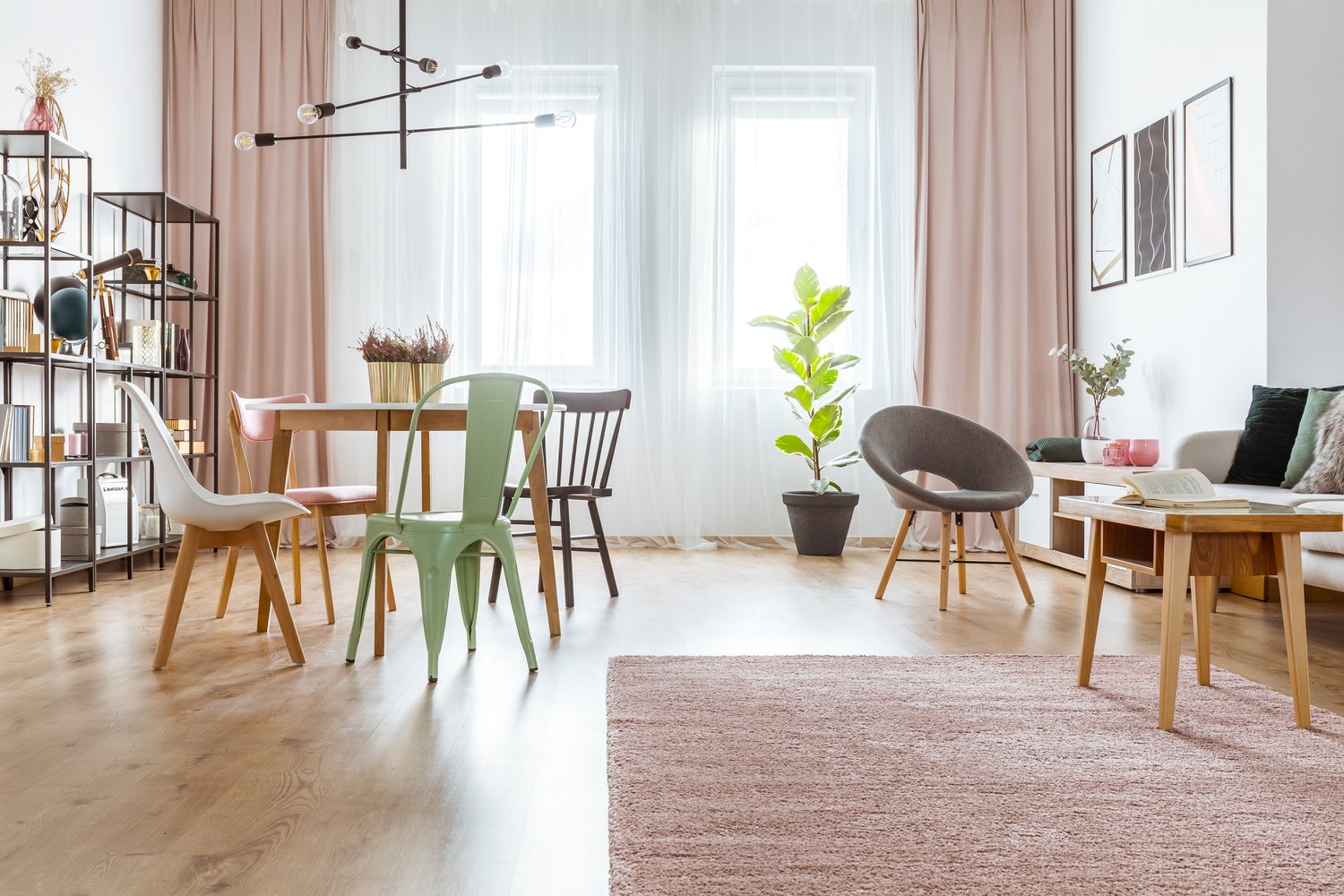Selecting the perfect area rug can transform a space from disjointed to harmonious, but many homeowners struggle with determining the appropriate size and placement. A well-chosen rug anchors your furniture, defines zones within open floor plans, and adds warmth and texture to your home. In this comprehensive guide, we’ll explore essential rules for choosing area rug sizes and placement strategies for the main rooms in your home, including living rooms, dining areas, and bedrooms, to help you make informed decisions that enhance your interior design.
Understanding Area Rug Fundamentals
Before diving into specific rooms, it’s important to understand some universal principles that apply when selecting area rugs. Size is perhaps the most critical factor – a rug that’s too small can make a room feel disconnected, while one that’s too large may overwhelm the space. As a general rule, leave approximately 12-18 inches of floor space between the rug edge and the walls in most rooms. This border creates a pleasing visual frame around your rug. Consider your room’s traffic patterns as well, ensuring the rug extends under furniture in high-use areas to prevent trips and maintain a cohesive look. Quality and material should match your lifestyle – wool rugs offer durability for high-traffic areas, while more delicate materials might work in less-used spaces. According to interior design experts at AskHomey, the right rug not only enhances aesthetics but can also improve a room’s acoustics and comfort.
Living Room Rug Placement Rules
The living room presents unique challenges when it comes to choosing area rug size. Here, you have several placement options depending on your room configuration and personal preference. The most popular approach is the “all legs on” rule, where the rug is large enough that all furniture pieces (sofas, chairs, tables) sit completely on the rug. This creates a unified, cohesive seating area. For larger rooms, this might require a 9×12 foot rug or even larger. Alternatively, the “front legs only” rule works well in smaller spaces or when working with budget constraints. With this approach, only the front legs of major furniture pieces rest on the rug, creating connection while reducing the necessary rug size. Whichever rug placement rules for living rooms you follow, ensure that the rug extends at least 6-8 inches beyond furniture on all sides to avoid a cramped appearance. For rectangular living rooms, align your rug with the room’s orientation rather than placing it diagonally, which can create visual tension.
Dining Room Rug Selection
In dining areas, rug placement follows more straightforward guidelines. Your dining room rug size should extend at least 24 inches beyond all sides of the table. This crucial extra space allows chairs to remain on the rug even when pulled out for seating. Without this buffer, chair legs will catch on the rug edge, creating both practical problems and visual disruption. For a standard rectangular six-person dining table (approximately 36×60 inches), an 8×10 foot rug typically works well. Round tables pair beautifully with round rugs, maintaining at least the same 24-inch extension beyond the table edge. Remember that dining room rugs endure significant wear from chair movement and potential food spills, so choose durable, easily cleanable materials like low-pile wool blends or indoor/outdoor rugs with stain-resistant properties. Dark patterns or multicolored designs help conceal inevitable dining mishaps while adding visual interest to your dining space.
Bedroom Rug Placement Strategies
Bedroom rug placement offers more flexibility than other rooms, with several effective approaches depending on your bed size and room dimensions. The classic placement positions a large rug under the bed with generous exposure on all sides – ideally 18-24 inches of rug visible beyond the sides and foot of the bed (though the rug may not extend under the headboard). For a king-sized bed, this approach typically requires a 9×12 foot rug. A more economical option uses smaller rugs positioned on either side of the bed as runners, or a single rug at the foot of the bed. These alternatives provide the warmth and comfort underfoot where needed most while requiring less investment. In master suites with sitting areas, consider defining that zone with its own appropriately sized rug following living room guidelines. Bedroom rug placement should prioritize comfort – choose soft, plush materials that feel wonderful underfoot during your morning routine and provide warm landing spots on cold floors.
Coordinating Multiple Rugs
For open floor plans or large spaces divided into functional zones, coordinating multiple rugs presents an additional challenge. When using several rugs in visible proximity, they should share some common elements—coordinating colors, complementary patterns, or similar materials—while still defining distinct areas. Maintain consistent spacing between rugs, generally leaving 18-24 inches of visible flooring as a border. In hallways or transitions between rugged areas, ensure the widths align with doorways or passage points to create visual flow. This approach allows you to select area rug sizes appropriate for each functional space while maintaining a cohesive overall design narrative throughout your home.
For more tips and to connect with reliable home service professionals, follow AskHomey on Facebook and Instagram.



